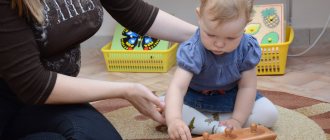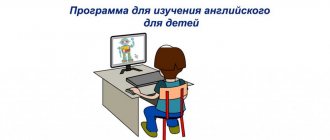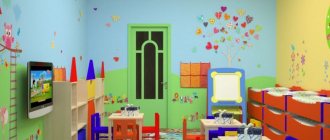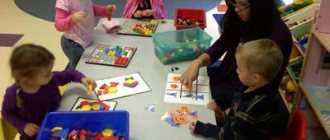Use of innovative technologies and techniques
To fill the lesson with original cognitive content, educators are increasingly using pedagogical innovations, successfully applying creative domestic and foreign developments, as well as materials and equipment for them.
Educational games by Voskobovich
The specificity of Vyacheslav Voskobovich’s method is the combination of fascinating fairy tales, in which the child himself becomes a direct participant, and original author’s games. There are about 40 games, and all of them are aimed at the comprehensive development of the child: learning to read and count quickly, sensory perception, improving fine motor skills, design and modeling skills. In addition, they cultivate perseverance and concentration, the ability to complete the work started.
Photo gallery: educational games by V. Voskobovich
Methodology of Nikolai Zaitsev
This technique is aimed at quickly teaching a child to read, and immediately in a continuous manner. The composition (the fusion of a vowel and a consonant, as well as a separate vowel) is not just pronounced, but sung, which is closer to children’s perception, develops fluency of speech and speech breathing.
Of the manuals in the technique, the most widely used is a set of cubes on which letters are drawn indicating sounds and warehouses, as well as tables of warehouses. Each cube is painted in a specific color and has a filling (rustling or ringing), thanks to which children easily learn the concepts of “hard and soft”, “voiceless and voiced consonant”.
Principles of Zaitsev’s technique:
- From general to specific and from specific to general.
- From the concrete-figurative through the visual-effective to the verbal-logical.
- Providing visibility using various channels of perception. Systemic material supply.
- Algorithmization of educational actions.
- Taking into account the physiology of perception of educational information.
- Protecting the health of students.
Zaitsev's cubes have sounding fillings, so children can not only see them, but also hear them
Dienesh blocks and Cuisenaire sticks
Activities using such aids as Dienesh blocks and Cuisenaire sticks are gaining enormous popularity in kindergarten. The former teach children the formation and division of sets into subsets based on the characteristics of elements (shape, color, thickness), the construction of logical chains, elimination operations, and analogy.
Sets of bright blocks, multi-colored geometric bodies, are initially perceived by children as a convenient building material, but over time, children learn to think logically, finding relationships between the characteristics of objects (blocks) and their sets.
Brightly colored Cuisenaire sticks are also attractive to children. While playing with them, children gradually learn to count within 10, compare numbers, find adjacent ones, and become familiar with the concept of number composition and even multiplicity.
Dienesh blocks and Cuisenaire sticks are gaining more and more popularity in kindergartens and are very popular with children
Video: master class on educational games in preschool educational institutions
Information and communication technologies (ICT)
Informatization of the developing educational environment of preschool educational institutions is a requirement of the time. Modern technologies surround the child at home and in public places, therefore, the kindergarten cannot remain aloof from them, because its task is to prepare children for life as best and fully as possible.
ICT is used in classes in two forms: multimedia presentations or slide shows with an interactive whiteboard; educational games, programs using a computer (laptop). An interactive whiteboard allows you to create a unique environment in the classroom. It will help the teacher create a picture of the forest, sea, and space that is close to real. Bright, moving, large images created for presentations will help children quickly and clearly understand what is being discussed in the lesson. Educational computer games and programs develop children's speed and flexibility of thinking and increase interest in educational activities. However, we should not forget that ICTs are auxiliary means of learning; they cannot replace live communication, conversation, or ordinary didactic games; everything must be combined in moderation.
There are several rules for maintaining the health of children in classes using ICT:
- Children in the middle group can “communicate” with a computer no more than 5–7 minutes a day, 2–3 times a week.
- The distance from children to the multimedia board is at least 2–2.5 m.
- Mandatory games and exercises to relieve visual strain (eye gymnastics).








